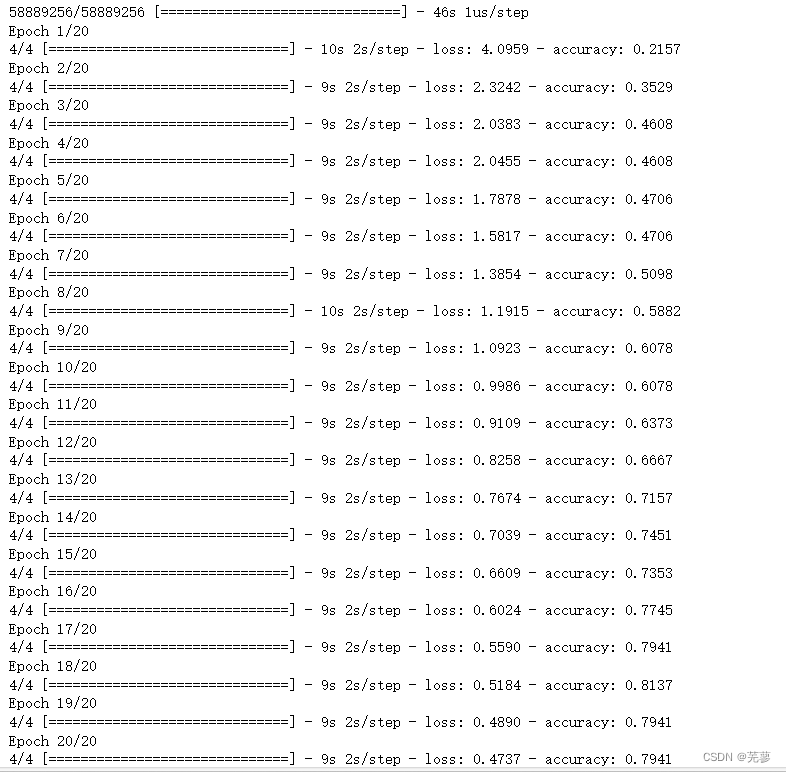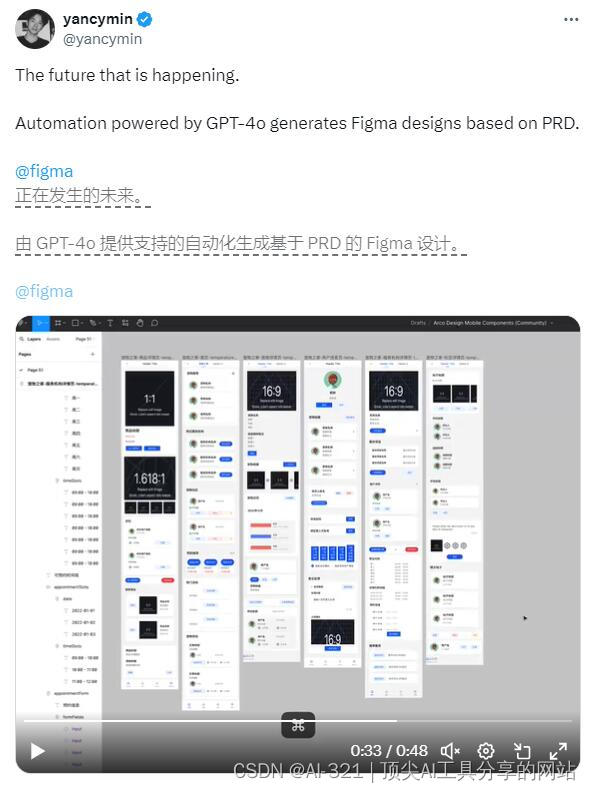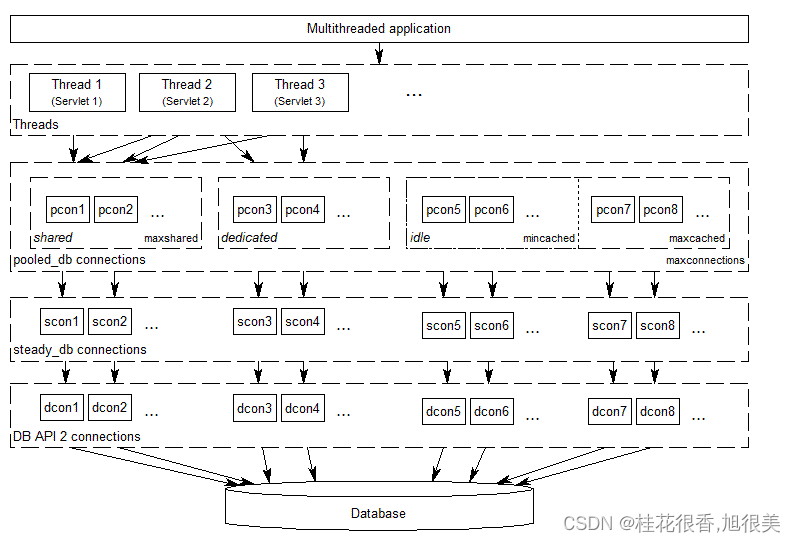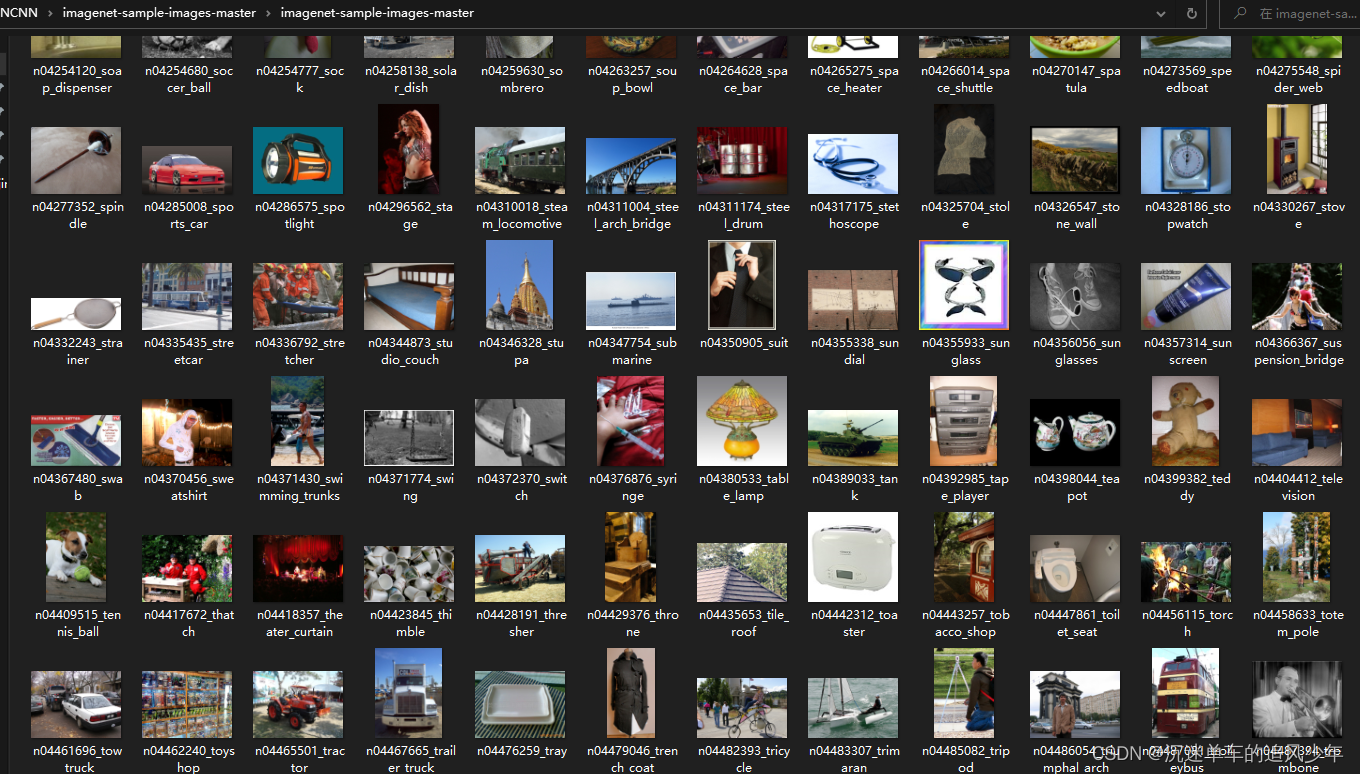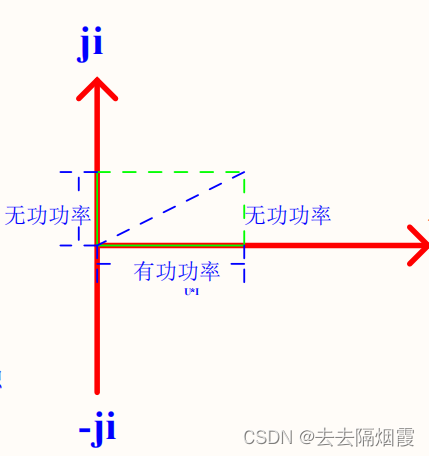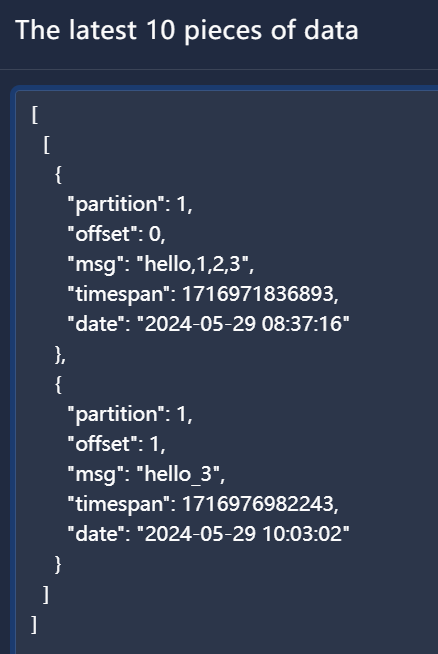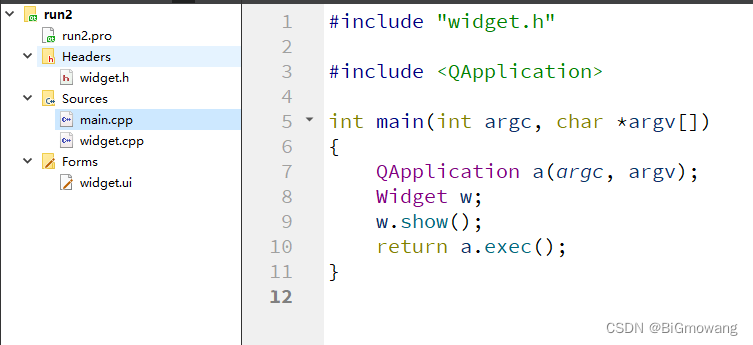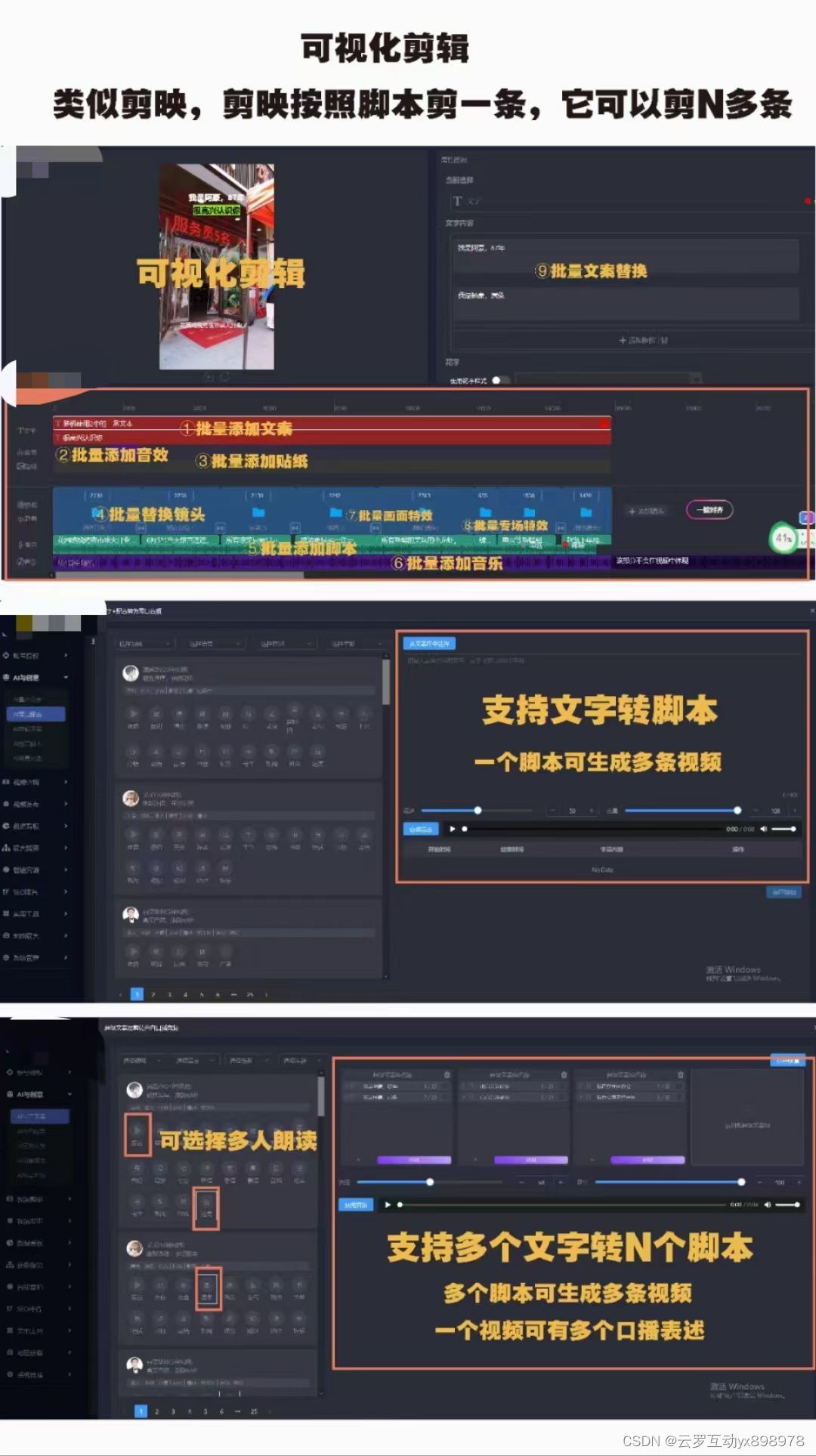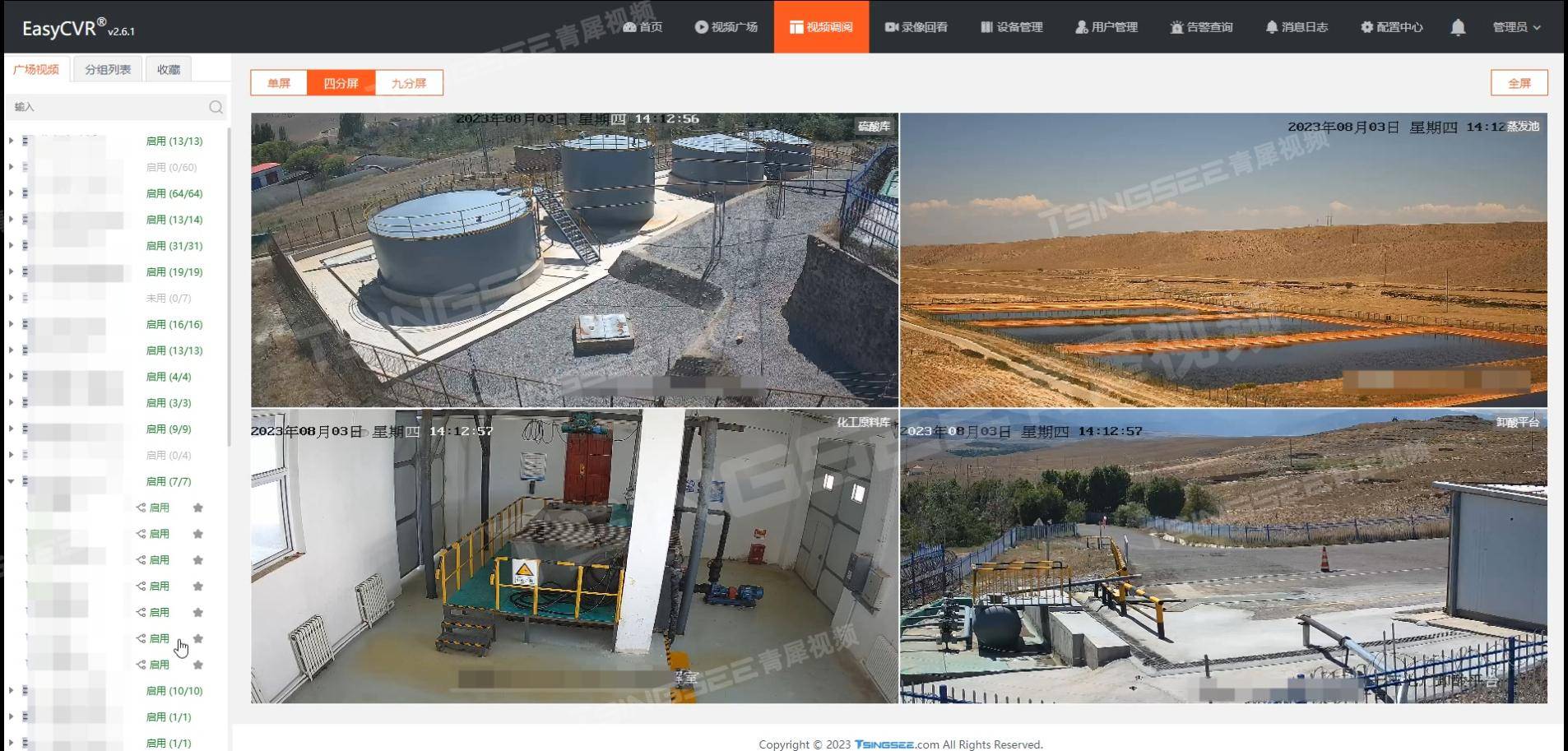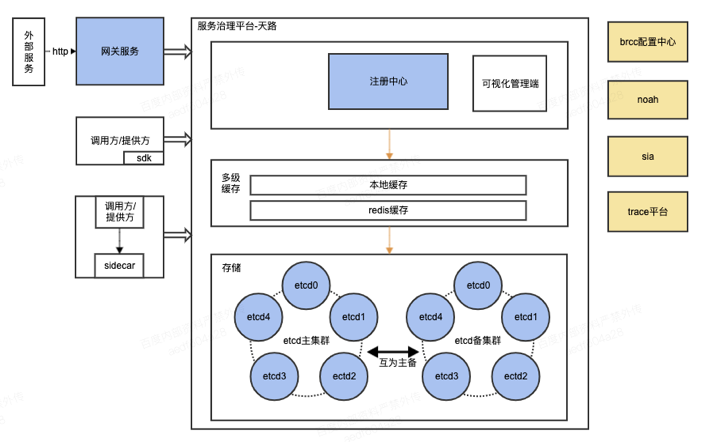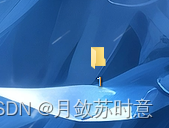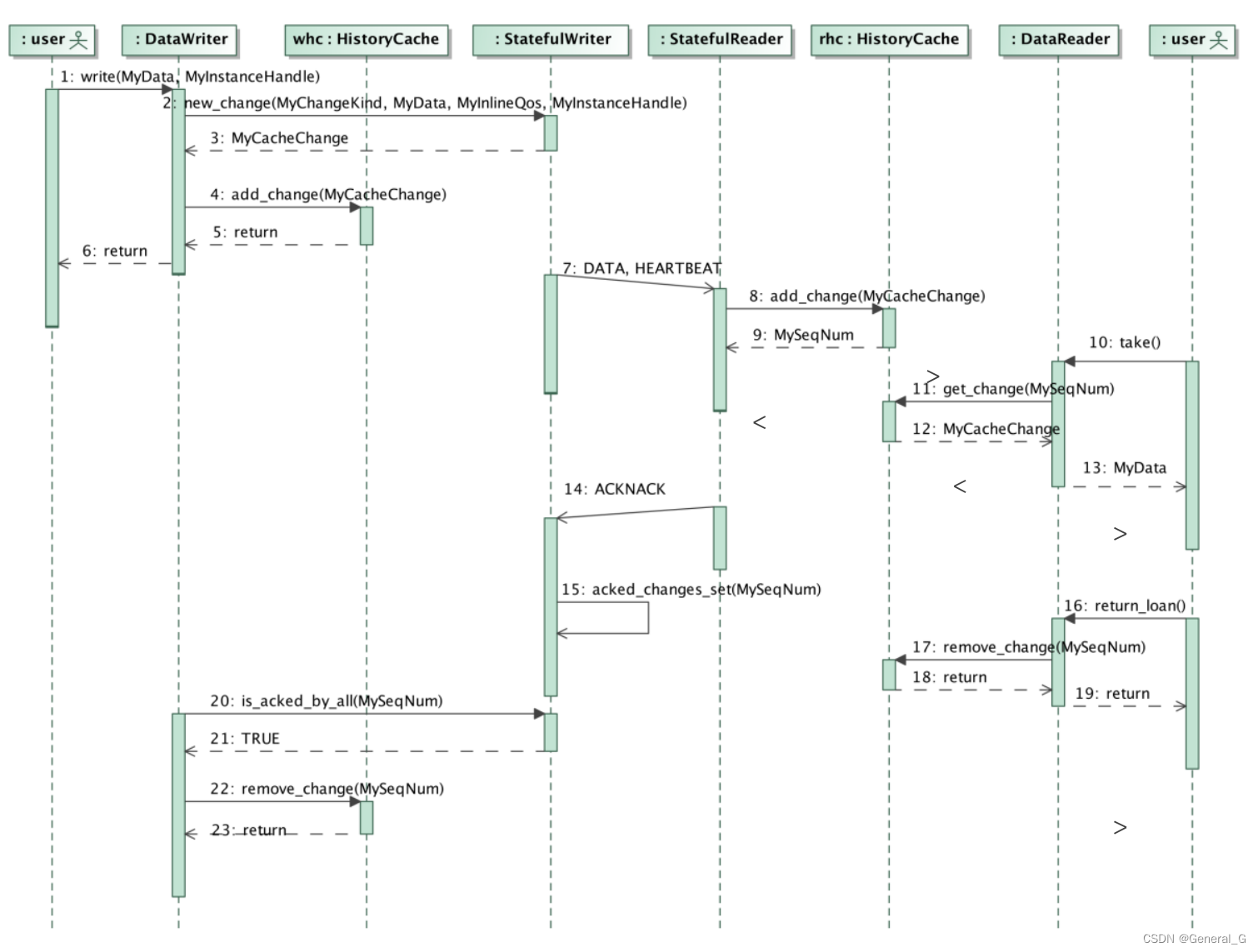模型
- AlexNet
- 导入必要的库:
- 加载类别名称:
- 创建标签映射字典:
- 加载图像数据和对应的标签:
- 构建AlexNet模型:
- 编译模型:
- 训练模型:
- LeNet-5
- 导入必要的库:
- 加载类别名称:
- 创建标签映射字典:
- 加载图像数据和对应的标签:
- 构建LeNet模型:
- 编译模型:
- ResNet
- 导入必要的库:
- 加载类别名称:
- 创建标签映射字典:
- 加载图像数据和对应的标签:
- 使用ResNet50模型进行迁移学习
- 冻结预训练模型的权重:
- 编译模型:
- 训练模型:
- VGG-19
- 导入必要的库:
- 加载类别名称
- 创建标签映射字典:
- 加载图像数据和对应的标签:
- 使用VGG-19模型进行迁移学习
- 冻结预训练模型的权重:
- 编译模型:
- 训练模型:
- VGG-16
- 导入必要的库:
- 加载类别名称
- 创建标签映射字典:
- 加载图像数据和对应的标签:
- 使用VGG-16模型进行迁移学习
- 冻结预训练模型的权重:
- 编译模型:
- 训练模型:
本篇博客的图像和标签数据集就是之前自己训练的
博客地址:
https://blog.csdn.net/2301_76794217/article/details/139215356?spm=1001.2014.3001.5502
数据集地址:
https://download.csdn.net/download/2301_76794217/89359353?spm=1001.2101.3001.9500
AlexNet
提出时间:2012年
主要贡献:AlexNet是第一个在ImageNet竞赛中取得显著成绩的深度卷积神经网络,它引入了许多后来被广泛采用的技术,如局部响应归一化(LRN)、ReLU激活函数、使用GPU进行并行计算等。
结构特点:AlexNet包含5个卷积层、3个全连接层和两个用于防止过拟合的dropout层。它使用了大量的数据增强技术,包括随机裁剪、随机缩放、随机水平翻转等。
大小:大约2500万个参数 层数:5层卷积层,3层全连接层 特点:使用ReLU激活函数、LRN层、重叠池化、多尺度特征提取等
导入必要的库:
os:用于操作文件和目录。
cv2:OpenCV库,用于图像处理。
numpy:用于数值计算。
tensorflow:用于构建和训练深度学习模型。
tensorflow.keras.layers:Keras层,用于构建神经网络。
tensorflow.keras.models:Keras模型,用于创建模型架构。
import os
import cv2
import numpy as np
import tensorflow as tf
from tensorflow.keras.layers import Conv2D, MaxPooling2D, Flatten, Dense, Dropout, ZeroPadding2D
from tensorflow.keras.models import Sequential
加载类别名称:
打开classes.txt文件,读取其中的类别名称,并存储在classes列表中。
with open('99/classes.txt', 'r') as f:
classes = f.read().splitlines()
创建标签映射字典:
label_mapping字典将数字标签映射到对应的情绪名称。
label_mapping = {
'0': 'sad',
'1': 'happy',
'2': 'amazed',
'3': 'anger'
}
加载图像数据和对应的标签:
遍历image_folder中的所有图像文件。
读取图像,将其调整为AlexNet所需的输入大小(227x227像素),并将其添加到X_train列表。
读取与图像对应的标签文件(.txt格式),提取标签索引,将其映射到情绪名称,然后转换为数字标签,并添加到y_train列表。
将X_train和y_train转换为NumPy数组,并对图像数据进行归一化处理。
image_folder = '561'
label_folder = '99'
X_train = []
y_train = []
for image_file in os.listdir(image_folder):
image_path = os.path.join(image_folder, image_file)
image = cv2.imread(image_path)
if image is not None:
image = cv2.resize(image, (227, 227)) # AlexNet输入图像大小为227x227
X_train.append(image)
label_file = os.path.join(label_folder, image_file.replace('.jpg', '.txt'))
with open(label_file, 'r') as f:
label_index = f.readline().strip().split()[0] # 只取第一个数字作为标签索引
label_name = label_mapping[label_index]
label = classes.index(label_name)
y_train.append(label)
X_train = np.array(X_train) / 255.0 # 归一化图像数据
y_train = np.array(y_train)
构建AlexNet模型:
使用Keras的Sequential模型,按照AlexNet的结构添加层。
模型包括卷积层(Conv2D)、最大池化层(MaxPooling2D)、全连接层(Dense)、dropout层(Dropout)等。
输出层使用softmax激活函数,因为这是一个多分类问题。
model = Sequential()
model.add(ZeroPadding2D((1, 1), input_shape=(227, 227, 3)))
model.add(Conv2D(96, (11, 11), strides=(4, 4), activation='relu'))
model.add(MaxPooling2D((3, 3), strides=(2, 2)))
model.add(ZeroPadding2D((1, 1)))
model.add(Conv2D(256, (5, 5), activation='relu'))
model.add(MaxPooling2D((3, 3), strides=(2, 2)))
model.add(ZeroPadding2D((1, 1)))
model.add(Conv2D(384, (3, 3), activation='relu'))
model.add(ZeroPadding2D((1, 1)))
model.add(Conv2D(384, (3, 3), activation='relu'))
model.add(ZeroPadding2D((1, 1)))
model.add(Conv2D(256, (3, 3), activation='relu'))
model.add(MaxPooling2D((3, 3), strides=(2, 2)))
model.add(Flatten())
model.add(Dense(4096, activation='relu'))
model.add(Dropout(0.5))
model.add(Dense(4096, activation='relu'))
model.add(Dropout(0.5))
model.add(Dense(len(classes), activation='softmax'))
编译模型:
使用Adam优化器、稀疏分类交叉熵损失函数(因为标签是整数),并监控准确率。
model.compile(optimizer='adam', loss='sparse_categorical_crossentropy', metrics=['accuracy'])
训练模型:
使用fit方法训练模型,指定训练数据、迭代次数(epochs)、批量大小(batch_size)。
model.fit(X_train, y_train, epochs=20, batch_size=32)

LeNet-5
提出时间:1998年 主要贡献:LeNet-5是由Yann
LeCun提出的,它是第一个在实际中使用的卷积神经网络,主要用于手写数字识别。LeNet-5的设计非常简单,但它在当时的技术条件下取得了很好的效果。
结构特点:LeNet-5包含两个卷积层、两个池化层、三个全连接层和两个输出层。它的设计非常紧凑,只包含6万个参数,这使得它可以在当时的硬件条件下运行。
大小:大约6万个参数 层数:2层卷积层,3层全连接层 特点:非常早期的卷积神经网络,用于手写数字识别,结构简单,参数少。
导入必要的库:
os:用于操作文件和目录。
cv2:OpenCV库,用于图像处理。
numpy:用于数值计算。
tensorflow:用于构建和训练深度学习模型。
import os
import cv2
import numpy as np
import tensorflow as tf
加载类别名称:
打开classes.txt文件,读取其中的类别名称,并存储在classes列表中。
with open('99/classes.txt', 'r') as f:
classes = f.read().splitlines()
创建标签映射字典:
label_mapping字典将数字标签映射到对应的情绪名称。
label_mapping = {
'0': 'sad',
'1': 'happy',
'2': 'amazed',
'3': 'anger'
}
加载图像数据和对应的标签:
构建LeNet模型:遍历image_folder中的所有图像文件。
读取图像,并将其添加到X_train列表。
读取与图像对应的标签文件(.txt格式),提取标签索引,将其映射到情绪名称,然后转换为数字标签,并添加到y_train列表。
将X_train和y_train转换为NumPy数组。
#加载图像数据和对应的标签
image_folder = '561'
label_folder = '99'
X_train = []
y_train = []
for image_file in os.listdir(image_folder):
image_path = os.path.join(image_folder, image_file)
image = cv2.imread(image_path)
if image is not None:
X_train.append(image)
label_file = os.path.join(label_folder, image_file.replace('.jpg', '.txt'))
with open(label_file, 'r') as f:
label_index = f.readline().strip().split()[0] # 只取第一个数字作为标签索引
label_name = label_mapping[label_index]
label = classes.index(label_name)
y_train.append(label)
X_train = np.array(X_train)
y_train = np.array(y_train)
构建LeNet模型:
使用Keras的Sequential模型,按照LeNet的结构添加层。
模型包括卷积层(Conv2D)、最大池化层(MaxPooling2D)、全连接层(Dense)等。
输出层使用softmax激活函数,因为这是一个多分类问题。
model = tf.keras.Sequential([
tf.keras.layers.Conv2D(6, (5, 5), activation='relu', input_shape=(X_train.shape[1:])),
tf.keras.layers.MaxPooling2D((2, 2)),
tf.keras.layers.Conv2D(16, (5, 5), activation='relu'),
tf.keras.layers.MaxPooling2D((2, 2)),
tf.keras.layers.Flatten(),
tf.keras.layers.Dense(120, activation='relu'),
tf.keras.layers.Dense(84, activation='relu'),
tf.keras.layers.Dense(len(classes), activation='softmax')
])
编译模型:
使用Adam优化器、稀疏分类交叉熵损失函数(因为标签是整数),并监控准确率。
model.fit(X_train, y_train, epochs=20, batch_size=32)
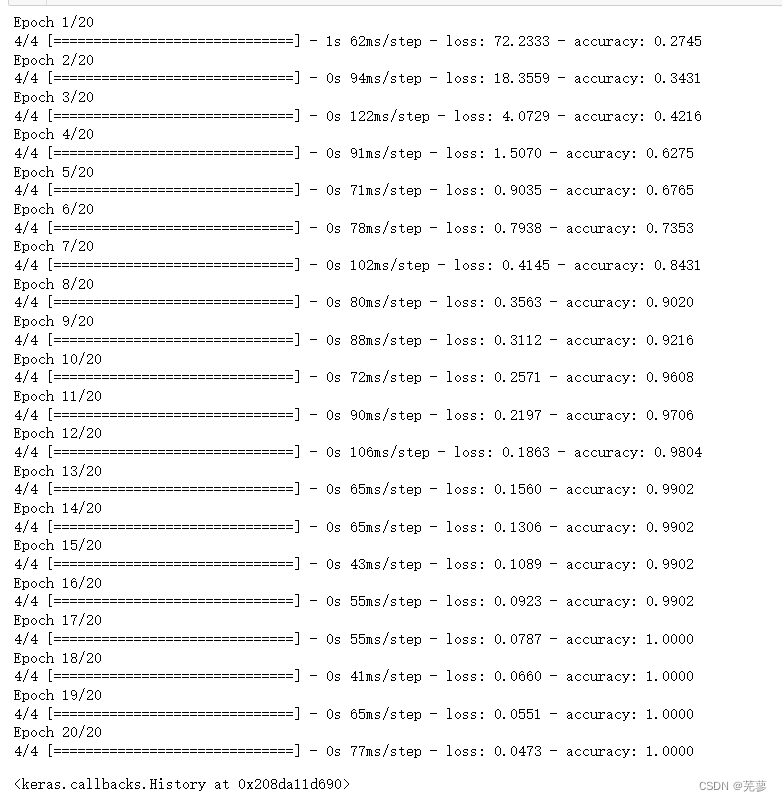
ResNet
提出时间:2015年 主要贡献:ResNet是第一个引入残差学习的深度网络,它通过引入残差块(Residual
Block)来解决深层网络训练困难的问题,这些残差块包含一个恒等连接,使得网络可以更稳定地训练更深层次的网络。
结构特点:ResNet包含多个残差块,每个残差块包含一个或多个卷积层,这些卷积层可以有不同的大小和数量。ResNet的层数通常比其他网络更深,如ResNet-50、ResNet-101、ResNet-152等。大小:大约2500万个参数 层数:50层,包括17个残差块 特点:引入了残差学习,可以构建更深层次的网络,解决梯度消失和梯度爆炸问题。
导入必要的库:
os:用于操作文件和目录。
cv2:OpenCV库,用于图像处理。
numpy:用于数值计算。
tensorflow:用于构建和训练深度学习模型。
tensorflow.keras.applications:包含预训练的模型,如ResNet50。
tensorflow.keras.layers:Keras层,用于构建神经网络。
tensorflow.keras.models:Keras模型,用于创建模型架构。
import os
import cv2
import numpy as np
import tensorflow as tf
from tensorflow.keras.applications import ResNet50
from tensorflow.keras.layers import Dense, GlobalAveragePooling2D
from tensorflow.keras.models import Model
加载类别名称:
打开classes.txt文件,读取其中的类别名称,并存储在classes列表中。
with open('99/classes.txt', 'r') as f:
classes = f.read().splitlines()
创建标签映射字典:
label_mapping字典将数字标签映射到对应的情绪名称。
label_mapping = {
'0': 'sad',
'1': 'happy',
'2': 'amazed',
'3': 'anger'
}
加载图像数据和对应的标签:
遍历image_folder中的所有图像文件。
读取图像,并将其调整为ResNet50所需的输入大小(224x224像素),并将其添加到X_train列表。
读取与图像对应的标签文件(.txt格式),提取标签索引,将其映射到情绪名称,然后转换为数字标签,并添加到y_train列表。
image_folder = '561'
label_folder = '99'
X_train = []
y_train = []
for image_file in os.listdir(image_folder):
image_path = os.path.join(image_folder, image_file)
image = cv2.imread(image_path)
if image is not None:
X_train.append(cv2.resize(image, (224, 224))) # Resize images to (224, 224)
label_file = os.path.join(label_folder, image_file.replace('.jpg', '.txt'))
with open(label_file, 'r') as f:
label_index = f.readline().strip().split()[0] # 只取第一个数字作为标签索引
label_name = label_mapping[label_index]
label = classes.index(label_name)
y_train.append(label)
X_train = np.array(X_train)
y_train = np.array(y_train)
使用ResNet50模型进行迁移学习
加载预训练的ResNet50模型,但不包括顶部的全连接层。
添加一个全局平均池化层(GlobalAveragePooling2D)和一个全连接层(Dense),用于输出预测。
创建一个新的模型,将ResNet50的输出连接到新的全连接层。
base_model = ResNet50(weights='imagenet', include_top=False)
x = base_model.output
x = GlobalAveragePooling2D()(x)
output = Dense(len(classes), activation='softmax')(x)
model = Model(inputs=base_model.input, outputs=output)
冻结预训练模型的权重:
通过设置base_model.layers中的每个层的trainable属性为False,可以冻结预训练模型的权重,只训练新添加的全连接层。
for layer in base_model.layers:
layer.trainable = False
编译模型:
使用Adam优化器、稀疏分类交叉熵损失函数(因为标签是整数),并监控准确率。
model.compile(optimizer='adam', loss='sparse_categorical_crossentropy', metrics=['accuracy'])
训练模型:
使用fit方法训练模型,指定训练数据、迭代次数(epochs)、批量大小(batch_size)。
model.fit(X_train, y_train, epochs=20, batch_size=32)
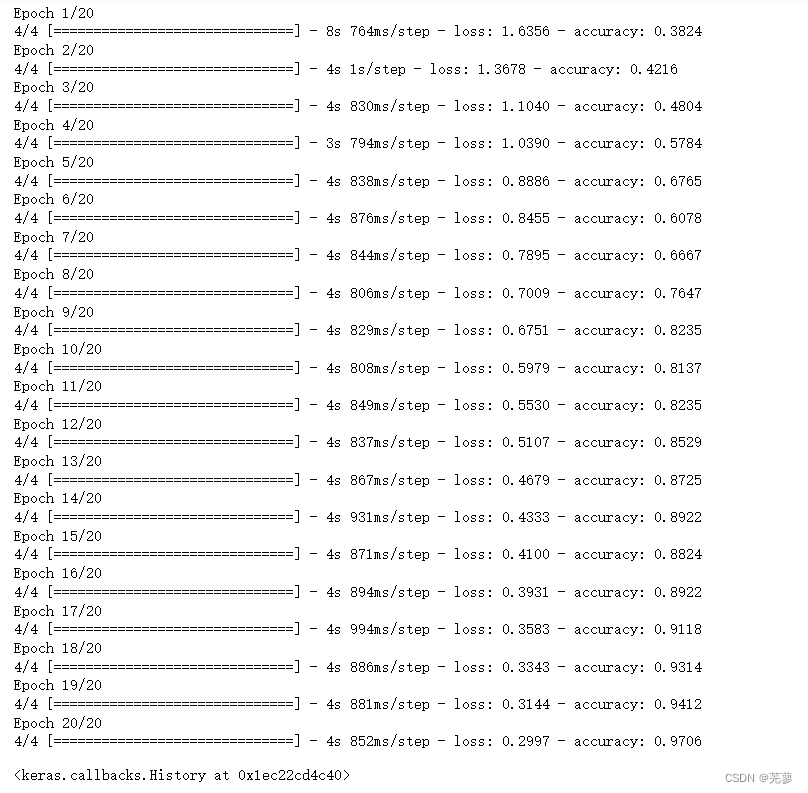
VGG-19
提出时间:2014年 主要贡献:VGG-16和VGG-19是由牛津大学的Karen Simonyan和Andrew
Zisserman提出的,它们通过使用非常小的3x3卷积核和大量重复的卷积层来构建深度网络,这使得它们在ImageNet竞赛中取得了很好的成绩。
结构特点:VGG-16包含16个卷积层和3个全连接层,而VGG-19包含19个卷积层和3个全连接层。VGG-16和VGG-19的卷积层都是使用3x3的卷积核,层与层之间使用2x2的最大池化层。大小:大约1.38亿/1.45亿个参数 层数:16/19层卷积层,3层全连接层
特点:使用小尺寸的3x3卷积核和重复的卷积层,可以提取更丰富的特征。
导入必要的库:
os:用于操作文件和目录。
cv2:OpenCV库,用于图像处理。
numpy:用于数值计算。
tensorflow:用于构建和训练深度学习模型。
tensorflow.keras.applications:包含预训练的模型,如VGG19。
tensorflow.keras.layers:Keras层,用于构建神经网络。
tensorflow.keras.models:Keras模型,用于创建模型架构。
import os
import cv2
import numpy as np
import tensorflow as tf
from tensorflow.keras.applications import VGG19
from tensorflow.keras.layers import Dense, GlobalAveragePooling2D
from tensorflow.keras.models import Model
加载类别名称
打开classes.txt文件,读取其中的类别名称,并存储在classes列表中。
with open('99/classes.txt', 'r') as f:
classes = f.read().splitlines()
创建标签映射字典:
label_mapping字典将数字标签映射到对应的情绪名称。
abel_mapping = {
'0': 'sad',
'1': 'happy',
'2': 'amazed',
'3': 'anger'
}
加载图像数据和对应的标签:
遍历image_folder中的所有图像文件。
读取图像,并将其调整为VGG-19所需的输入大小(224x224像素),并将其添加到X_train列表。
读取与图像对应的标签文件(.txt格式),提取标签索引,将其映射到情绪名称,然后转换为数字标签,并添加到y_train列表。
将X_train和y_train转换为NumPy数组。
image_folder = '561'
label_folder = '99'
X_train = []
y_train = []
for image_file in os.listdir(image_folder):
image_path = os.path.join(image_folder, image_file)
image = cv2.imread(image_path)
if image is not None:
X_train.append(cv2.resize(image, (224, 224))) # Resize images to (224, 224)
label_file = os.path.join(label_folder, image_file.replace('.jpg', '.txt'))
with open(label_file, 'r') as f:
label_index = f.readline().strip().split()[0] # 只取第一个数字作为标签索引
label_name = label_mapping[label_index]
label = classes.index(label_name)
y_train.append(label)
X_train = np.array(X_train)
y_train = np.array(y_train)
使用VGG-19模型进行迁移学习
加载预训练的VGG-19模型,但不包括顶部的全连接层。
添加一个全局平均池化层(GlobalAveragePooling2D)和一个全连接层(Dense),用于输出预测。
创建一个新的模型,将VGG-19的输出连接到新的全连接层。
base_model = VGG19(weights='imagenet', include_top=False, input_shape=(224, 224, 3))
x = base_model.output
x = GlobalAveragePooling2D()(x)
output = Dense(len(classes), activation='softmax')(x)
model = Model(inputs=base_model.input, outputs=output)
冻结预训练模型的权重:
通过设置base_model.layers中的每个层的trainable属性为False,可以冻结预训练模型的权重,只训练新添加的全连接层。
for layer in base_model.layers:
layer.trainable = False
编译模型:
使用Adam优化器、稀疏分类交叉熵损失函数(因为标签是整数),并监控准确率。
model.compile(optimizer='adam', loss='sparse_categorical_crossentropy', metrics=['accuracy'])
训练模型:
model.fit(X_train, y_train, epochs=20, batch_size=32)

VGG-16
导入必要的库:
os:用于操作文件和目录。
cv2:OpenCV库,用于图像处理。
numpy:用于数值计算。
tensorflow:用于构建和训练深度学习模型。
tensorflow.keras.applications:包含预训练的模型。
tensorflow.keras.layers:Keras层,用于构建神经网络。
tensorflow.keras.models:Keras模型,用于创建模型架构。
import os
import cv2
import numpy as np
import tensorflow as tf
from tensorflow.keras.applications import VGG19
from tensorflow.keras.layers import Dense, GlobalAveragePooling2D
from tensorflow.keras.models import Model
加载类别名称
打开classes.txt文件,读取其中的类别名称,并存储在classes列表中。
with open('99/classes.txt', 'r') as f:
classes = f.read().splitlines()
创建标签映射字典:
label_mapping字典将数字标签映射到对应的情绪名称。
abel_mapping = {
'0': 'sad',
'1': 'happy',
'2': 'amazed',
'3': 'anger'
}
加载图像数据和对应的标签:
遍历image_folder中的所有图像文件。
读取图像,并将其调整为VGG-16所需的输入大小(224x224像素),并将其添加到X_train列表。
读取与图像对应的标签文件(.txt格式),提取标签索引,将其映射到情绪名称,然后转换为数字标签,并添加到y_train列表。
将X_train和y_train转换为NumPy数组。
image_folder = '561'
label_folder = '99'
X_train = []
y_train = []
for image_file in os.listdir(image_folder):
image_path = os.path.join(image_folder, image_file)
image = cv2.imread(image_path)
if image is not None:
X_train.append(cv2.resize(image, (224, 224))) # Resize images to (224, 224)
label_file = os.path.join(label_folder, image_file.replace('.jpg', '.txt'))
with open(label_file, 'r') as f:
label_index = f.readline().strip().split()[0] # 只取第一个数字作为标签索引
label_name = label_mapping[label_index]
label = classes.index(label_name)
y_train.append(label)
X_train = np.array(X_train)
y_train = np.array(y_train)
使用VGG-16模型进行迁移学习
加载预训练的VGG-16模型,但不包括顶部的全连接层。
添加一个全局平均池化层(GlobalAveragePooling2D)和一个全连接层(Dense),用于输出预测。
创建一个新的模型,将VGG-16的输出连接到新的全连接层。
base_model = VGG16(weights='imagenet', include_top=False, input_shape=(224, 224, 3))
x = base_model.output
x = GlobalAveragePooling2D()(x)
output = Dense(len(classes), activation='softmax')(x)
model = Model(inputs=base_model.input, outputs=output)
冻结预训练模型的权重:
通过设置base_model.layers中的每个层的trainable属性为False,可以冻结预训练模型的权重,只训练新添加的全连接层。
for layer in base_model.layers:
layer.trainable = False
编译模型:
使用Adam优化器、稀疏分类交叉熵损失函数(因为标签是整数),并监控准确率。
训练模型:
model.fit(X_train, y_train, epochs=20, batch_size=32)
